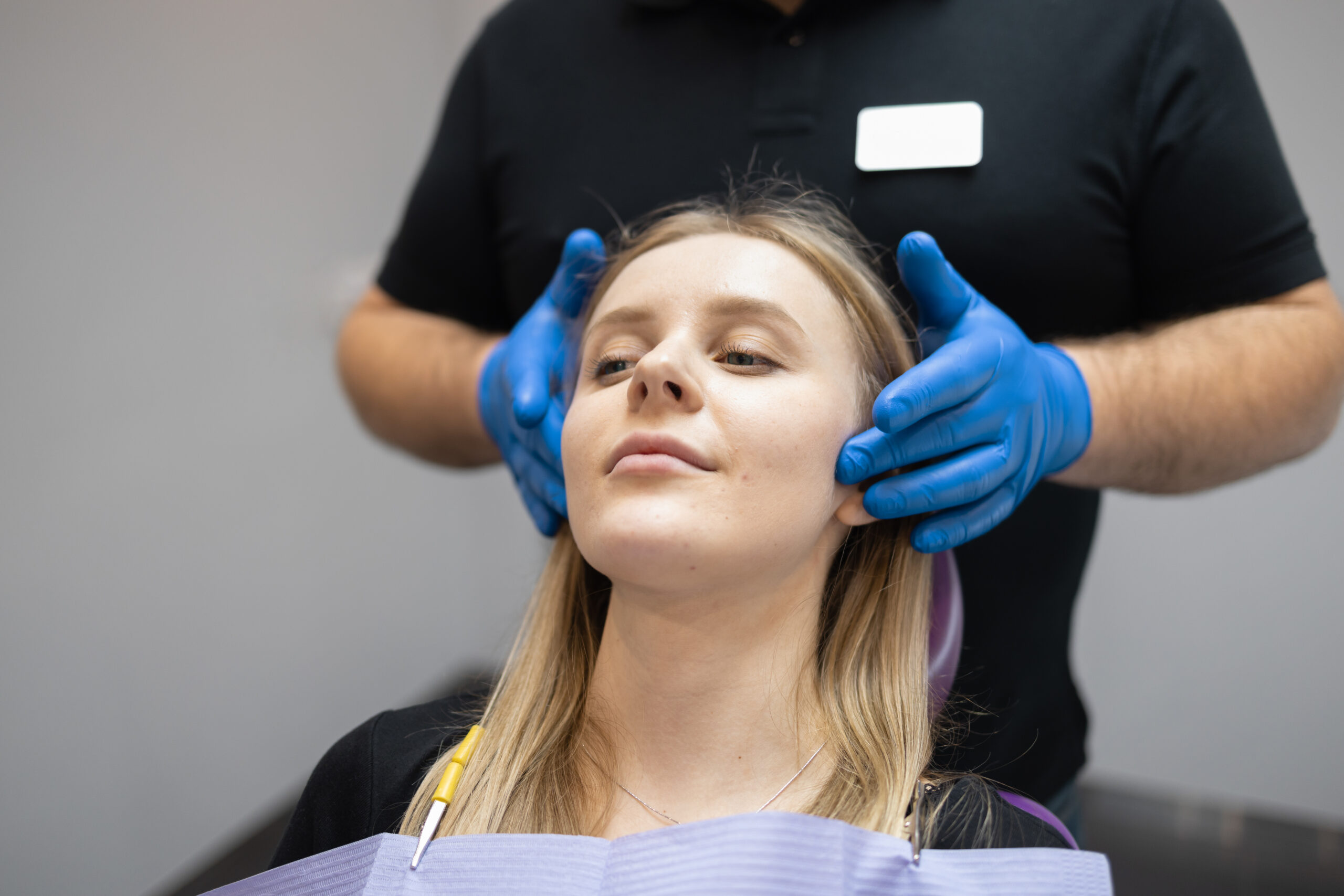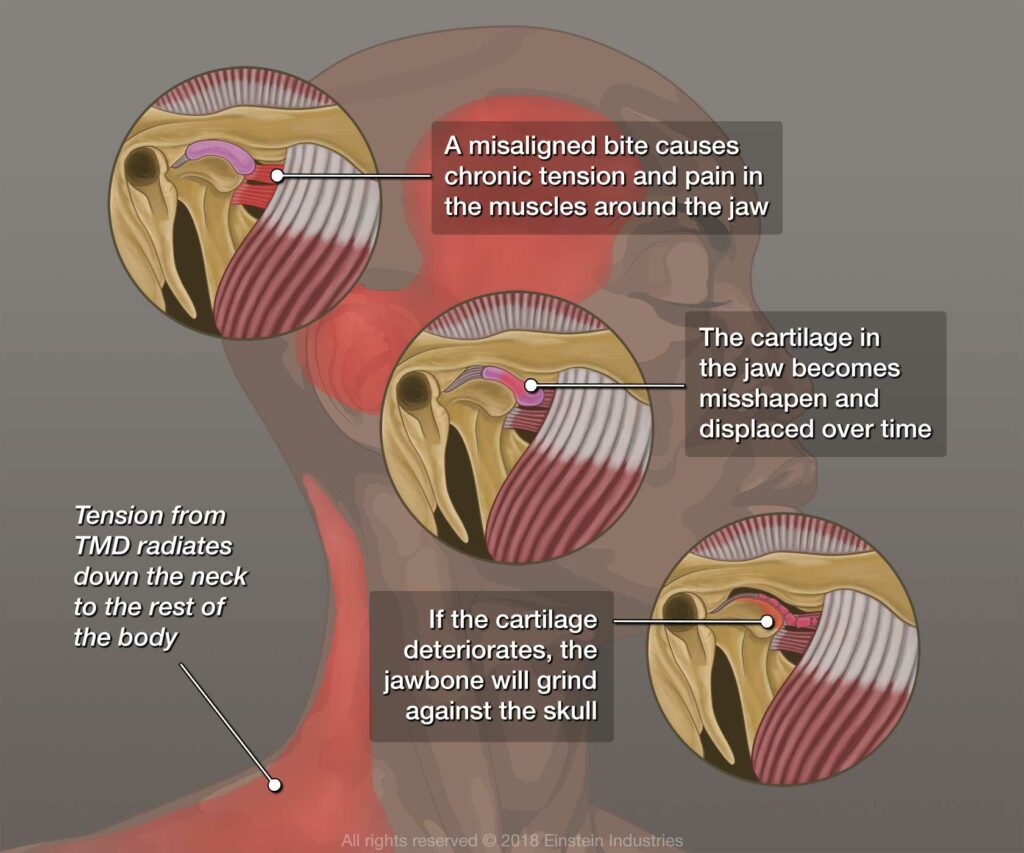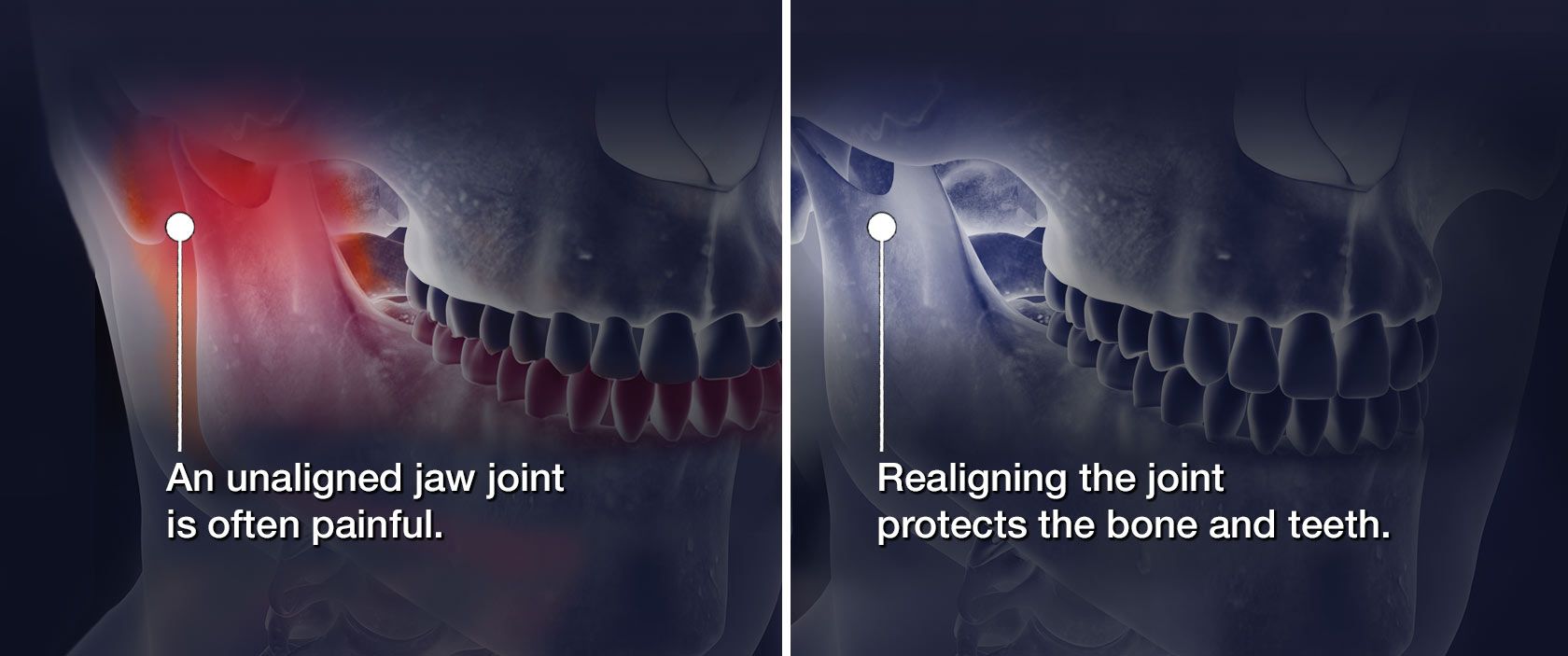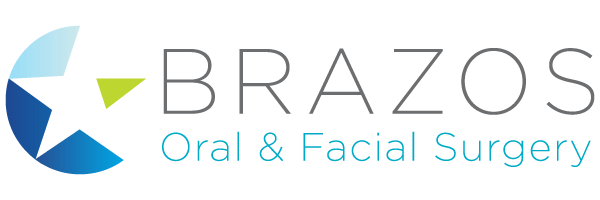TMJ Treatment
An imbalanced bite can trigger a range of problems as the jaw joints overcompensate in order to achieve a balanced resting position.
TMJ disorder treatment by a dentist can achieve the balance needed to stop inflammation, facial pain, headaches, and other symptoms.

TMJ Treatment can provide...
- Relief
Treatment can eradicate symptoms such as pain in and around the joint, clicking when opening and closing your mouth, a locked jaw, and headaches.
- Long-Term Benefits
By realigning the jaw, your dentist can prevent long-term harm, such as worn teeth, increased vulnerability to tooth decay, and serious joint damage.
- A Better Quality of Life
In the long run, TMJ treatment can improve your quality of life by relieving persistent and often debilitating symptoms that can compromise your mood and general wellbeing.
- Greater Affordability
In the long run, early TMJ treatment reduces the need for repeated and expensive procedures later in life.
What are the signs of TMD?
TMJ is an abbreviation for the temporomandibular joint, which is the joint that holds your upper and lower jaws together. It is a complex joint that moves your lower jaw forward and sideways smoothly. When this joint does not work correctly, the disorder is called TMD, or temporomandibular joint disorder. This condition can be caused by factors within the jaw joint (bone, disc, cartilage) or external factors (muscles of mastication, occlusion).
Some of the most common TMD symptoms include:
- Misalignment of the upper and lower teeth (a sudden change in the way they fit together)
- Pain when chewing or yawning
- Headaches, earaches, pressure behind the eyes
- Clicking or popping sound when you open or close your mouth
- Jaw locks in the open or closed position
- Tenderness of the jaw muscles
What are some of the causes of TMD?
Some of the most common TMD causes include:
- Osteoarthritis
- Rheumatoid arthritis
- Autoimmune disorders
- Foreign body reactions
- Tumors or neoplastic processes
- Displaced articular discs
- Previous TMJ surgeries
- Hemifacial microsomia or other congenital deformities


How is TMD treated?
Various treatments have been developed to target the patient’s specific problem and may reduce your symptoms dramatically. After we assess your condition and complete the diagnosis, we will create a treatment plan to alleviate your symptoms.
Treatment of TMD usually consists of both nonsurgical and surgical options. Nonsurgical options are typically exhausted first. They provide the benefit of being less invasive and work in approximately 90% of patients with TMD.
These nonsurgical options include:
- Occlusal splint therapy
- Occlusal adjustments
- Orthodontics
- Pain relievers, muscle relaxants, and anti-inflammatory medications
- Warm, moist heat
- Physical therapy
- Diet modifications (soft, no-chew diet)
If these nonsurgical treatments prove to be ineffective, then surgical treatment may be necessary to treat TMD.
Dr. Warren will perform a thorough history and physical exam to diagnose the source of your TMD. He may also use advanced radiographic techniques such as MRI and Computed Tomography to aid in the diagnosis further.
Surgical options may include:
- Arthrocentesis/Lavage of the joint space
- TMJ Arthroscopy
- Orthognathic (Jaw) surgery
- Articular disc repositioning with Mitek Anchors
- Removal of the disc and substitution with harvested muscle, cartilage, fat or fascia
- Removal of the disc and replacement with high-grade medical plastic/synthetic material
- Total joint reconstruction with ribs
- Total joint reconstruction with custom-made CAD/CAM joint prosthesis (www.tmjconcepts.com)
Easing Your Discomfort
TMD can be extremely difficult to treat as the cause is often multifactorial. There is often more than one cause or combination of causes leading to the problems. Often correcting a functional issue in the joint, such as repositioning the disc, may or may not alleviate the symptoms. It is important to understand this before undergoing a TMJ surgery.
Dr. Warren may require the help of a pain management specialist in controlling the extent of your TMD. Often TMJ pain can be difficult to manage with TMJ surgery alone. This becomes much more important in patients with long-standing TMJ pain or TMD.
Dr. Scott Warren and his surgical team will work closely with you and your restorative dentist to devise a treatment plan that best fits you as our patient. It is our top priority to target your condition and create an appropriate treatment plan so that you experience optimal results. Please contact Brazos Oral & Facial Surgery today to make a consultation appointment.

Get to know us.
At Brazos Oral & Facial Surgery, we know how to help you. Our board-certified surgeons and expert staff can provide the care you need to relieve the discomfort you feel.


